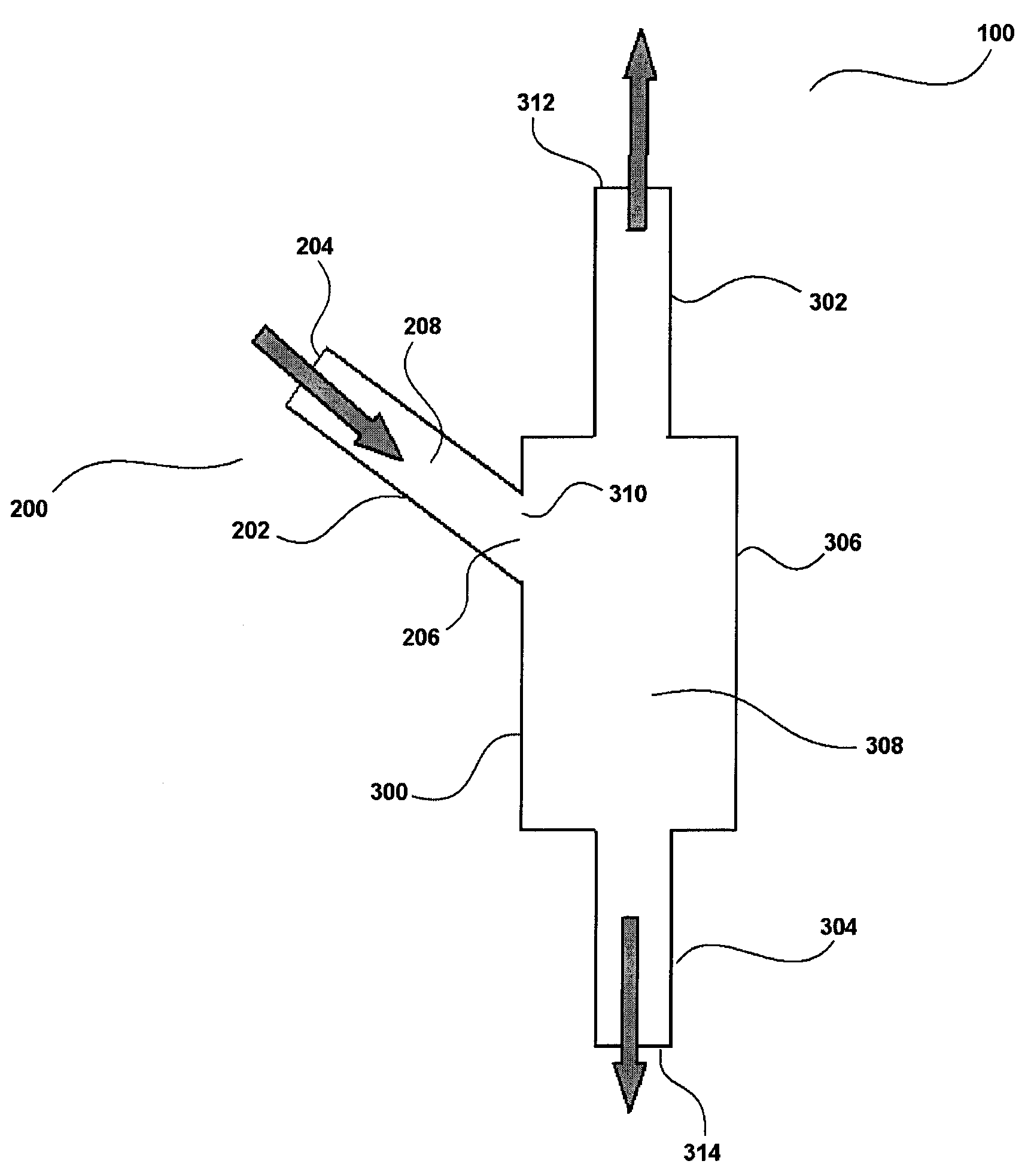Method and apparatus for the separation of a gas-solids mixture in a circulating fluidized bed reactor
a fluidized bed reactor and gas-solids technology, applied in the separation process, auxillary pretreatment, furnaces, etc., can solve the problems of large footprint and vessel size, difficult separation, and serious problems of centrifugal separators or centrifugal cyclone walls, so as to reduce the overall size of the equipment, improve particle collection efficiency, and reduce the effect of cyclone wall erosion
- Summary
- Abstract
- Description
- Claims
- Application Information
AI Technical Summary
Benefits of technology
Problems solved by technology
Method used
Image
Examples
examples
[0076]To further illustrate the principles of the present invention, the following examples and experimental data are put forth so as to provide those of ordinary skill in the art with a complete disclosure and description of how the devices, systems and methods claimed herein can be made and evaluated. They are intended to be purely exemplary of the invention and are not intended to limit the scope of what the inventors regard as their invention. Efforts have been made to ensure accuracy with respect to numbers (e.g., amounts, temperatures, etc.); however, some errors and deviations may have occurred. Unless indicated otherwise, parts are parts by weight, temperature is degrees C or is at ambient temperature, and pressure is at or near atmospheric.
I. Cold Flow Unit and Tests
[0077]As shown in FIG. 7, a conventional circulating fluidized bed (CFB) cold flow model was provided having an ID 4″ Riser, a 3″ crossover, an 8″ coneless cyclone also called the first-stage cyclone, a 12″ stan...
PUM
| Property | Measurement | Unit |
|---|---|---|
| Temperature | aaaaa | aaaaa |
| Temperature | aaaaa | aaaaa |
| Angle | aaaaa | aaaaa |
Abstract
Description
Claims
Application Information
 Login to View More
Login to View More - R&D
- Intellectual Property
- Life Sciences
- Materials
- Tech Scout
- Unparalleled Data Quality
- Higher Quality Content
- 60% Fewer Hallucinations
Browse by: Latest US Patents, China's latest patents, Technical Efficacy Thesaurus, Application Domain, Technology Topic, Popular Technical Reports.
© 2025 PatSnap. All rights reserved.Legal|Privacy policy|Modern Slavery Act Transparency Statement|Sitemap|About US| Contact US: help@patsnap.com



